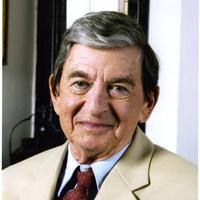
We often take for granted the amazing materials that make up so many of the vehicles, tools, and other items we use every day—the strong yet lightweight composites used in our automobiles, airplanes, even our tennis rackets and golf clubs. But such materials are the result of painstaking research and development, both to devise the material itself and to determine how to utilize it. For five decades, Zvi Hashin has been a leading expert in the mechanics of composite materials, making it possible to build spectacular creations such as the new Boeing 787 Dreamliner, the first airliner made almost entirely of composites.
By their very definition, composites are made up of different materials, which may vary greatly in their physical characteristics both on the large scale and at the microscopic level. But to be useful, composite materials have to be formulated and assembled in such a way that the possibly differing properties of their constituents will complement each other and create a stronger, more versatile whole. That requires a precise understanding of how each responds to stress and strain loads, so that damage and failure modes can be predicted in the composite material as a whole. This is micromechanics, and Zvi Hashin is universally recognized as the world's preeminent authority in the micromechanics of composite materials.
Although synthetic and composite materials have been around since at least the 1930s, it was only after World War II that they emerged as a major force in engineering. As techniques for creation of composites became more advanced and their applications more varied, composites became increasingly complex and their physical and mechanical properties more difficult to predict. Accordingly, Hashin developed two major theories on the micromechanics of composite materials which continue to guide their development, design, and applications today: one concerns thermoelastic properties (for example, how a material expands or contracts in response to temperature changes) and the other is used to predict failure modes (how the buildup of stress and strain within a structure or material leads to breakage). He has also developed widely-used algorithms for calculating various properties of certain types of composites, invaluable for the use of these materials in aerospace applications.
Born in Danzig, Germany in 1929, Hashin attended the Israel Institute of Technology and went on to obtain his doctorate in engineering at the Sorbonne in Paris. Joining the engineering faculty of Tel Aviv University in 1971 and serving as the founding chairman of the Department of Solid Mechanics, Materials and Structures, he now continues his work as an emeritus professor. Although he continues to reside in Israel, he has also spent a great deal of his career in the United States as a fellow and visiting professor at various institutions, including the University of Pennsylvania, Harvard University, and the University of California at Berkeley. Hashin has also taught at the University of Cambridge in England and Ecole Polytechnique in France. He has worked as a consultant for companies all over the world, including General Electric and Scott Paper, and held research contracts with NASA as well as the U.S. Army, Air Force, and Navy.
Ever since composite materials became an indispensable part of our modern world, many engineers have worked in micromechanics—but none have made as many fundamental and lasting contributions as Zvi Hashin. His theories and work have led composite materials to reach a level of sophistication that would have been unimaginable several decades ago. Hashin's achievements will continue to drive the maturation and continued progress of composite engineering in the 21st century.
Information as of April 2012

